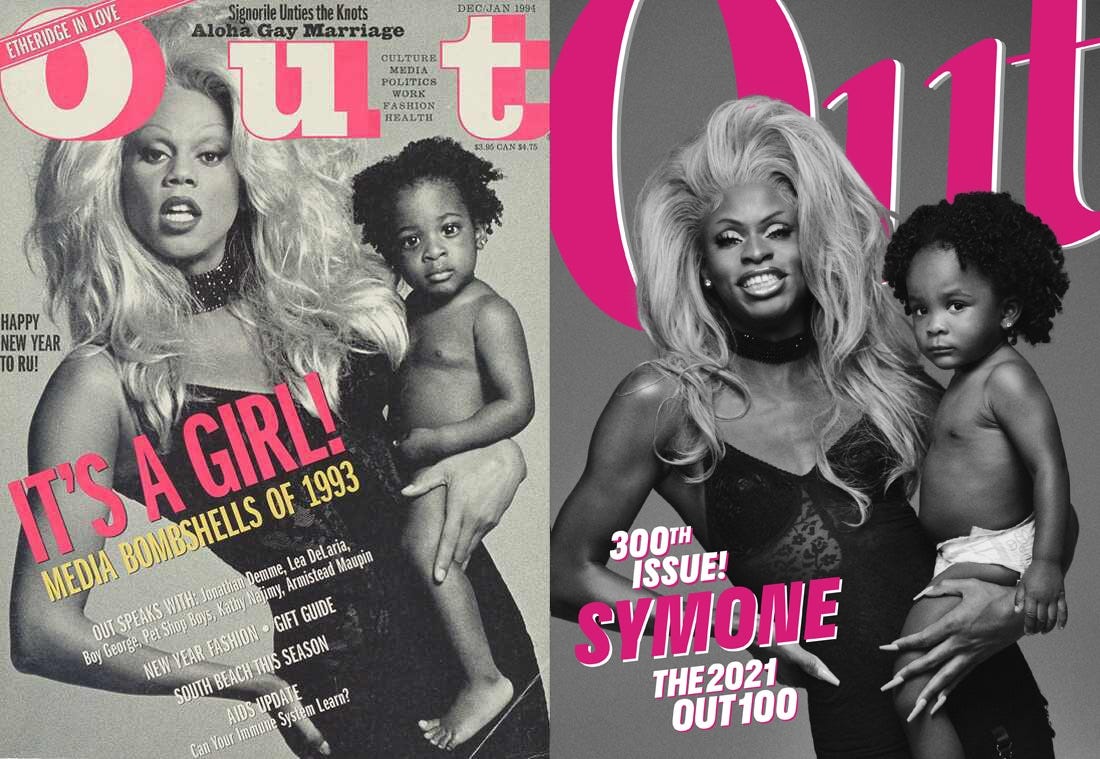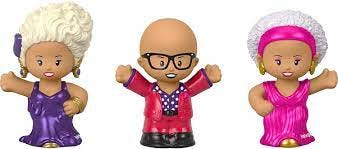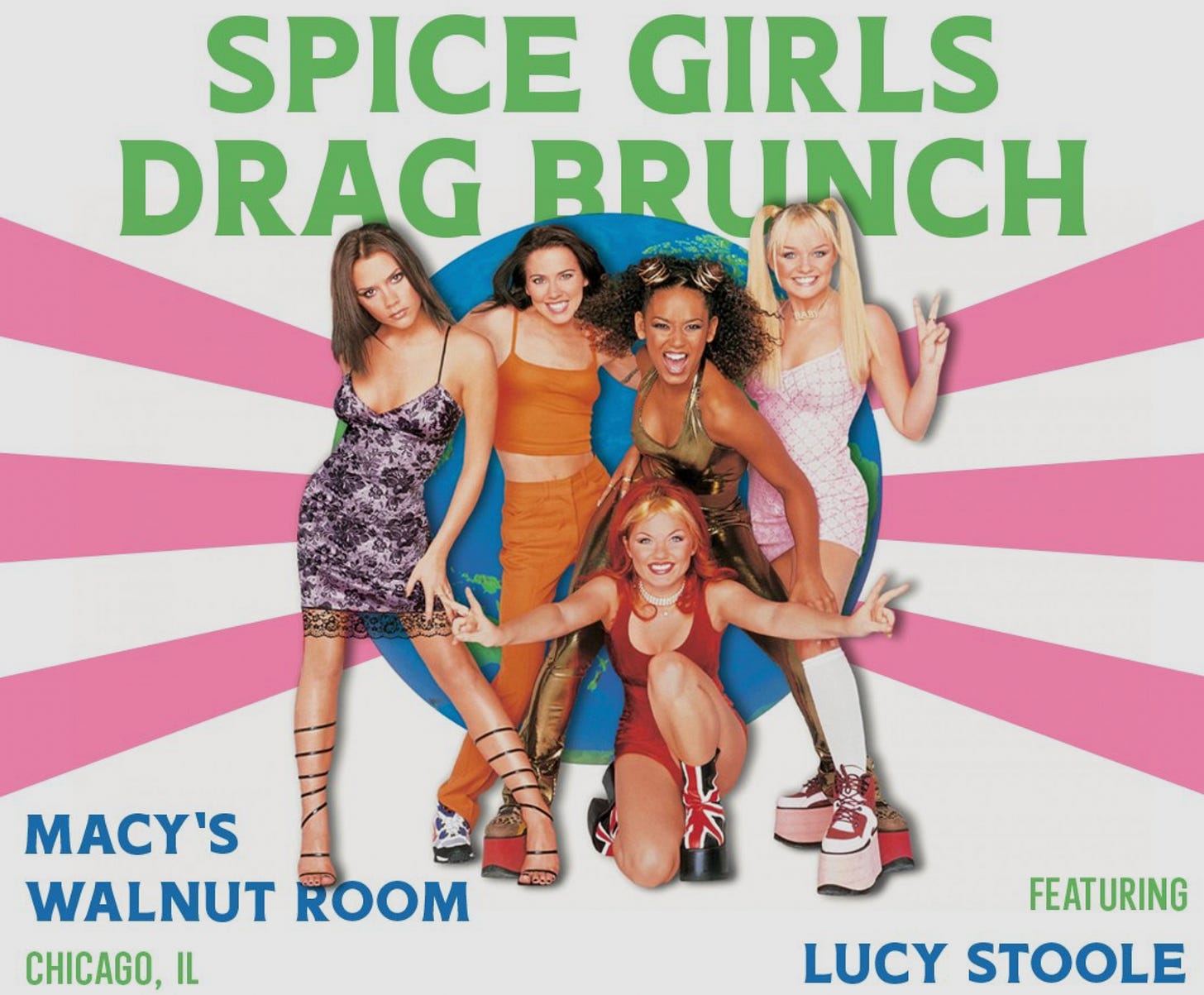A Drag Queen Race Already Won
Texas's efforts to outlaw minors from drag shows overlooks the point: it's already on Disney, in Macy's and mainstream

“My name is Jack. My mother calls me Jack. Everybody who cares about me calls me Jack, because that’s my name,” says a voiceover as a dark-haired young man talks on the phone and stares into a mirror ringed with lights. His eyes are swept with colorful shadow, and he absentmindedly runs an old safety razor over his beard. “But I work under the name of Sabrina. And all the queens call me Sabrina.”
If you’re thinking this sounds like a scene from RuPaul’s Drag Race, think again. This is from the opening scene of a documentary called The Queen, filmed in 1967 and screened at the 1968 Cannes Film Festival — though the convulsive riots there that summer in France would sideline the festival before awards could be handed out.
Largely forgotten and rarely shown in theaters for years after, the director Frank Simon’s film goes behind the scenes of the run-up to the so-named “Miss All-America Camp Beauty Pageant”, which, incredible to think about now, was actually held one evening at New York’s Town Hall at a time when gay sexual activity and the very practice of drag were both illegal.
Remarkably the obscure documentary re-emerged, and almost 50 years since its debut, a restored version was released in 2019. I had never heard of it but happened to catch it last month at a friend’s house when it recently played on Netflix. (Though June marks the formal celebration of gay pride, the film’s run on the streamer just ended; it is available for rent on Prime Video and as DVD from Kino Lorber.)
Not just a priceless look at gay life pre-Stonewall, The Queen is also an amazing window into Manhattan of that era, even before the fiction of The Boys in the Band, which wouldn’t premiere as a play off-Broadway until late 1968, and as a movie in 1970.
This, though, is real life, told in cinema verité, in a span of scenes chronicling the run-up to the contest and the event itself and a somewhat stormy denouement. Most affecting are the “girl talk” vignettes with the budding queens in their hotel rooms, dishing on their families, the small towns where they grew up and everyone “knew since I was 5”-that-they-were-gay conversations. And given that it was 1967 and the middle of the Vietnam War, they also discussed how they evaded or were turned down by the local draft board.
Out of drag, they wear the short ’60s haircuts and standard clothes of the pre-hippie days. Gowned up, many of them wear floaty chiffon numbers with long white gloves, a paean to Jackie Kennedy’s style. On the pageant stage there’s even a small live orchestra and figures of the time like Andy Warhol in the audience.
“Just come to New York right away. All you do is take take a cab straight up to my apartment at 5 East 73rd and here we all are. Love you,” the boy named Jack says as the opening scene continues, chatting away on the phone with a would-be contestant.
“Jack,” née one Jack Doroshow, as it turns out, is actually the canny entrepreneur behind the event we find out. Unlikely as it seems, the young Doroshow started producing such contests nationwide in 1959 after meeting some drag queens at the YMCA while on a visit to New York from Philadelphia and seeing his golden opportunity amid the marabou and makeup. His alter-ego Sabrina, formally Flawless Sabrina, would come to serve as MC, radiating a purposefully motherly stance that wouldn’t put her at odds with contestants.
Under the banner of his “Nationals Academy”, Doroshow went on to produce pageants all across the country, both in smaller towns and big cities, often under the guise of charity which helped make it more palatable to local authorities. “The places that were kind of off-the-beaten-track were the places where the largest number of drag queens would come out of the hills in sausage curls and hoop skirts,” he once told The New York Times.
I was thinking about how far the world of drag had come, both as entertainment and part of mainstream culture since the rather rudimentary days of The Queen when the news came out of Texas this week (always Texas) that Rep. Bryan Slaton was planning a bill in the state legislature to ban minors from seeing drag queens in response to one Dallas bar's “Drag the Kids to Pride” event, held on a Saturday morning and billed as “a family friendly drag show.”
With the usual overheated exaggeration of these supposed guardians of youthful morality, Slayton huffed in a press release, “The events of the past weekend were horrifying.” No, he wasn’t talking about Uvalde. Reportedly, conservative Christian protestors even showed up and swarmed the venue, shouting curses at the children in attendance, which had to be a lot more traumatic for any of those kids than seeing a man in a dress. Or, you know, having a gunman with an AR-15 kill your classmates and teachers.
Even the ever-ridiculous Marjorie Taylor Green got in on the act (I can hardly type her name without chuckling over Randy Rainbow’s sing-song refrain of her name alone in his parody that’s running through my head) with her usual “grooming-predator-teachers-funding” word-salad statement. And oblivious to the irony, even UFC fighter Derek Brunson chimed in on Twitter as well, “Children at a provocative drag show…Can we protect our children more in today’s society.”
Well, I’ve some news for the naysayers and nabobs. Whether the little ones live in a townhouse or a trailer park, the kids have probably seen it all already. And while they don’t quite run the entertainment world (to paraphrase Bey), drag queens are ever-present on our screens, in our theaters and even on our living room coffee tables.
Credit the overwhelming reach of RuPaul Charles. It’s not just his bedrock reality competition series Drag Race (which premiered on Logo in 2009) and its All-Star spinoffs that make it a constant on VH1 and Paramount+ (not to mention versions in Canada and the U.K.), and brand extensions like RuPaul’s DragCon, which had a big post-Covid comeback in Los Angeles in May. And let’s not forget the House of Love cocktails and mocktails and the RuPaul chocolate bars. There’s even a new Fisher-Price Little People Collector set of three RuPaul figurines with two of the dollies wearing copies of real RuPaul gowns and a third in the star’s backstage Werk Room mufti, complete with packaging that features a stage, spotlight and glitter accompaniments.
Redoubtable Ru, whose 11 wins as host and producer make him the Emmy’s most awarded person of color, is also hosting the upcoming Lingo gameshow for CBS (CBS!) and will also be featured this summer in Disney+’s Zombies 3 movie sequel, voicing the role of The Mothership, described as a “comedically passive-aggressive UFO” and premiering July 15.
The mother of all queens started his rise to the top in 1993 with the release of his debut single, “Supermodel (You Better Work)” from his first studio album Supermodel of the World (1993). He became a spokesperson for MAC Cosmetics a year later, raising money for the MAC AIDS Fund, and in the process becoming the first drag queen to land a cosmetics contract.
From there, it’s been upwards and onwards since his first VH1 talker, The RuPaul Show, from 1996 to 1998, with a number of guest-starring TV roles and an SNL hosting gig among his credits.
By now, show business is old hat to Mama Ru, whose resume includes big-screen appearances in the Brady Bunch movies, But I'm a Cheerleader, holiday movie The Bitch Who Stole Christmas, and the classic To Wong Foo as well as his own Netflix original television series AJ and the Queen more recently in 2020.
But the race doesn’t stop with RuPaul. Just this week, Hulu ordered up Drag Me to Dinner, created and executive produced by Neil Patrick Harris and David Burtka, who will also star next to queenly contestants in a dinner party showdown. (Speaking of chef-erie, HBO Max’s just-wrapped first season of Julia, even featured an episode — likely fictitious but lots of fun —with The French Chef herself meeting up with her drag doppelgänger.) And of course, who can forget A Star is Born’s drag queens, Willam (Willam Belli) and Shangela Laquifa Wadley (real name: D.J. Pierce), the latter of whom stars in HBO’s We're Here, a traveling reality show featuring other former Drag Race contestants Bob the Drag Queen and Eureka O'Hara and renewed for a third season.
So, some 50 years after airless confines of The Queen, it’s not hyperbole to say it’s a whole new world of drag. It’s all a bit confounding for this scribe who remembers Ru as a downtown New York fixture spawned by the East Village club The Pyramid and early Wigstock festivals.
This month is the 30th anniversary of Out. Back in the early ’90s, I was a fashion consultant for the magazine and have to say I wondered if we would be able to pull off Ru’s New Year’s “It’s a Girl!” cover in 1994, with the ascendant star gowned in Versace and shot by legendary photographer Francesco Scavullo (the shoot was recreated by Drag Race winner Symone with an assist from Hollywood superstar stylist Law Roach for an Out100 cover last year honoring the magazine’s 300th issue.)
And it’s a long, long way from Doroshow’s The Queen days. (Retiring after one last 1969 “Miss Fire Island” pageant, the impresario retreated to Europe for a number of years before coming back to New York, where both he and Sabrina held court, still on 73rd street, until his death at 78 in 2017, according to a lengthy New York Times obituary.)
You can’t talk about drag without acknowledging that gender and queer issues are hot-button issues these days, raging in state legislatures and conservative boltholes trying to put a genie proudly out of the bottle back in. The CDC just reported that the number of young people who identify as transgender has nearly doubled in recent years (which will lead those already opposed to want to clamp down harder). Even Ru has had his tangles with trans advocates over his sunny attitude to what they see as a more serious move to gender diversity.
But drag is historically about performance, about adopting the dress and mannerisms of another gender for entertainment and self-fulfillment which should not be confused with people who feel misgendered and want to live authentically in the gender of their choice. It’s, dare I say, a first amendment right often at odds with those hell-bent on protecting the second.
For a little perspective on the current kiddie brunch bruhaha, I turned to Frank DeCaro, author of Drag: Combing Through the Big Wigs of Show Business and all-around media observer. “It strikes me as very manufactured,” he says. “It’s a manufactured outrage that’s done for reasons that include many things, but protecting children isn't one of them. You don’t care about kids. This is a photo op, this is a headline grab.”
“It’s hypocrisy front and center,” he continues. “I think the question that comes to mind is always ‘how stupid do you think we are?’ At least try to give us credit for a couple of brain cells. There's not a moment where you think it's genuine or they might have a point. Not for a second.”
As conservatives try to legislate against parents who take their child to an inoffensive drag show, give their kids gender-affirming medical care or tell women what to do with their bodies…well, it’s big government advocacy only when it comes to the issues they want to control. Pretty weak tea in the aftermath of a state’s unfathomable recent tragedy.
Ultimately, though, as drag hits peak social acceptance, its whiff of transgression from the early days of The Queen has been diluted, if nothing else, to be commercially successful for the programs, the products and the other facets of what is, after all, show business. And it’s really nothing new — even Jack Doroshow was looking to make a few bucks.
“The last drag brunch I went to was not in a gay bar. It was at a Macy's in Chicago and it was about as transgressive as an episode of Fuller House,” DeCaro says. “It’s not the Gay Pride parade. Drag is the Macy's Thanksgiving Day Parade now. It's that mainstream and it's that dangerous.”
New on The Ankler
Pod: Gone in 7 Minutes: Disney's “gang fight,” Dana Walden's contract negotiations and a town ‘outraged’ by the Peter Rice firing.
Brentwood School Sued Over 'Woke' Curriculum: The culture wars burn on at the exclusive westside school.
Paramount’s State of Slate: Analyzing Shari’s suddenly swaggy studio.
Martini Shot - Other People’s Money: The methods networks use to predict what shows will be hits.







